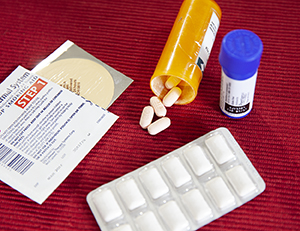Quitting smoking is a gift to yourself. It's one of the best things you can do to keep your heart disease from getting worse. Smoking reduces oxygen flow to your heart. It does this in two ways. It speeds the buildup of plaque along the artery walls. And it changes the health of your blood vessels. This raises your risk for heart attack, also known as acute myocardial infarction (AMI). Quitting helps reduce smoking's harmful effects. You may have tried to quit before, but don’t give up. Try again. Many smokers try a few times before they succeed. It's never too early to benefit from quitting smoking. This is especially true if you already have ongoing (chronic) conditions, such as high blood pressure and high cholesterol. These put you at higher risk for cardiovascular disease. Quitting smoking is a powerful way to reduce your risk for coronary disease.
Line up help
-
Ask for the support of your family and friends.
-
Join a smoking cessation class. Or ask your healthcare provider for a referral to a psychologist who specializes in helping people quit smoking.
-
Ask your healthcare provider about nicotine replacement products. Also ask about prescription medicines that can help you quit. It may take some time to find a product and schedule that works for you.
Set a quit date
-
Choose a date in the next 2 to 4 weeks.
-
After picking a day, mark it in bold letters on a calendar.
Your quit list
Ideas to stop smoking include:
-
Start by giving up cigarettes at the times you least need them.
-
Keep some fruit close by at the times you are most likely to reach for a cigarette. For many people, smoking has an oral fixation component. This must be recognized and replaced by a healthy habit.
-
Use a nicotine replacement product instead of a cigarette.
Write down a few more ideas:
______________________________________________________________________________
______________________________________________________________________________
______________________________________________________________________________
Set limits
-
Limit where you can smoke. Pick a room or a porch. Smoke only in that place.
-
Make smoking outdoors a house rule. Other smokers won’t tempt you as much.
-
Talk with smokers around you about your intent to stop smoking. Then they can show consideration for you and limit their smoking around you.
-
Hang a list of “quit benefits” in the spot where you smoke. Put one on the refrigerator and another on your car dashboard.
For more information
-
National Cancer Institute Smoking Quitline
smokefree.gov/talk-to-an-expert
877-44U-QUIT (877-448-7848)
Featured in



